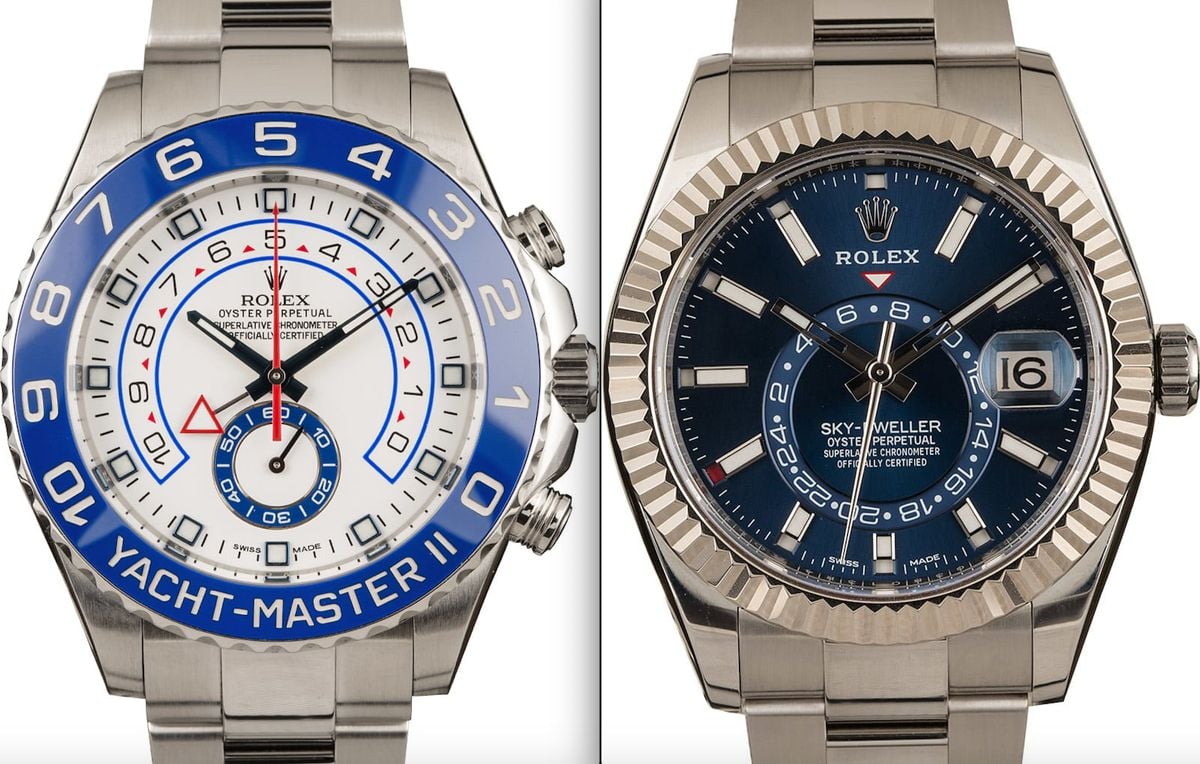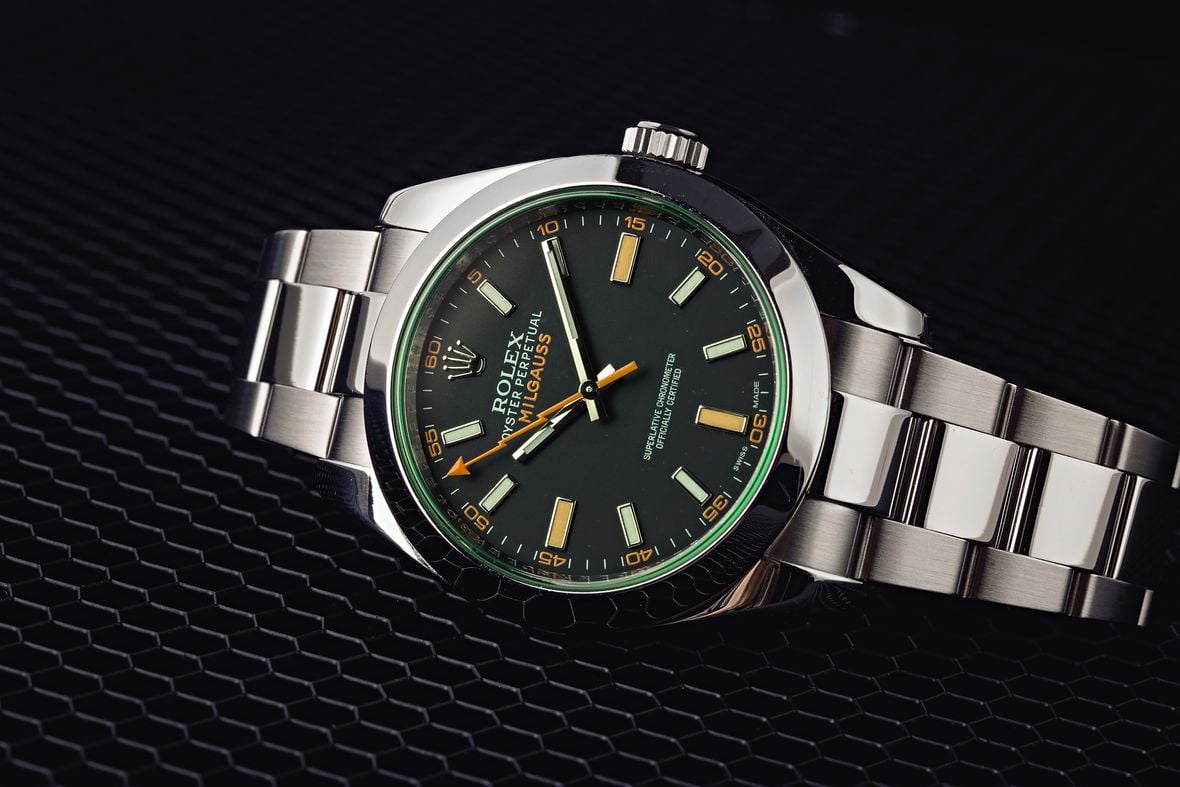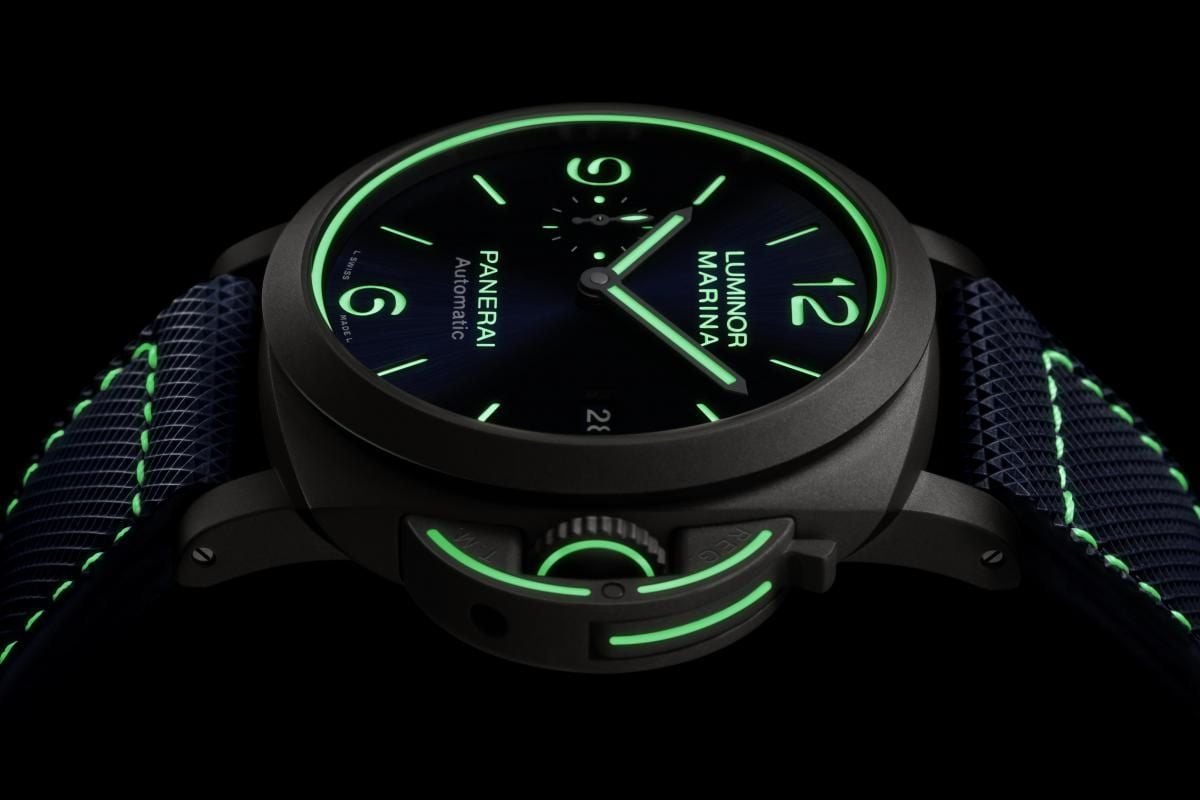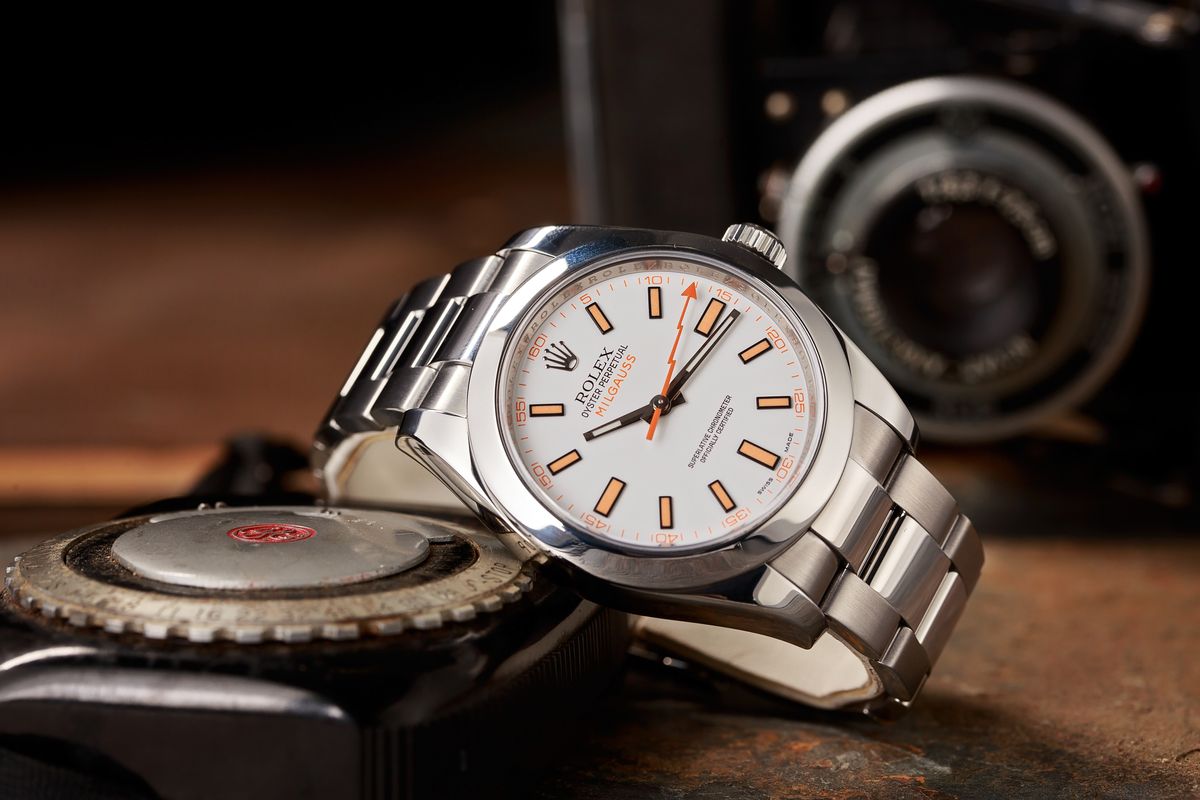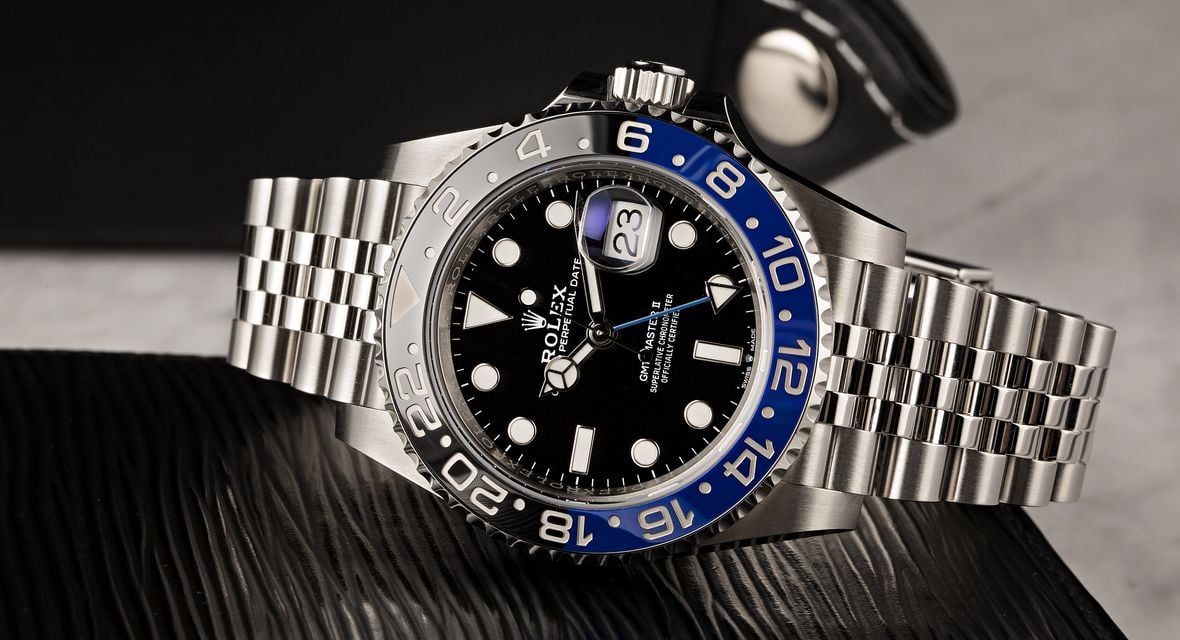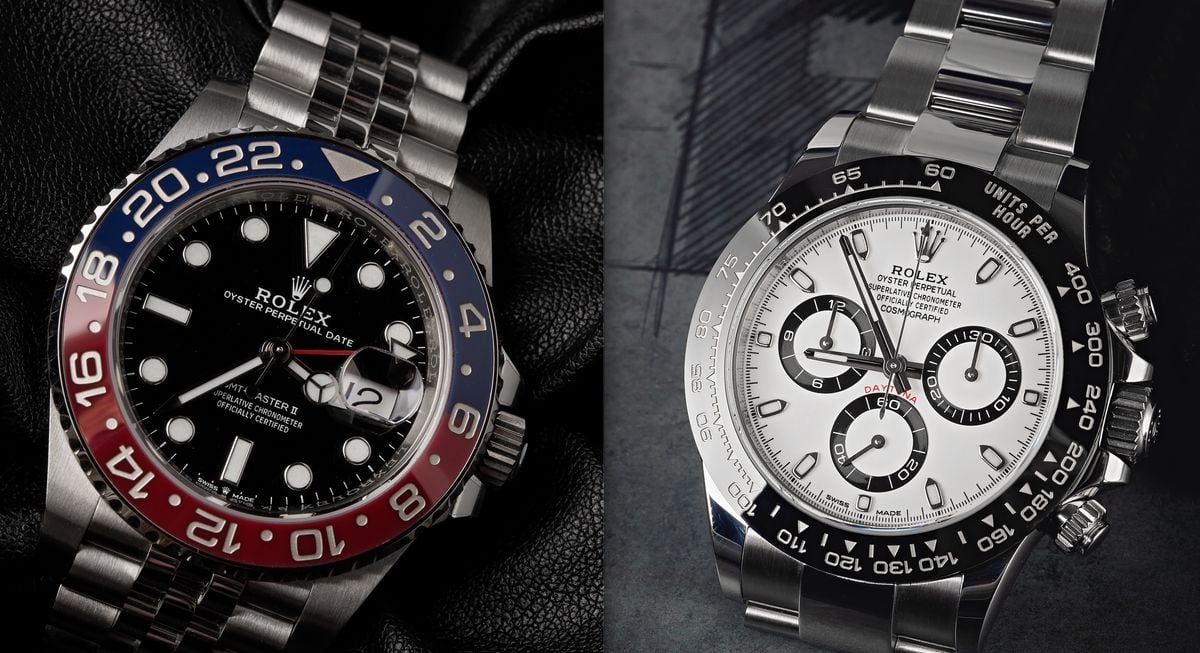Although they are by far the two most complicated watches in Rolex’s current lineup, on the face of it, the Sky-Dweller and the Yacht-Master II wouldn’t seem to have that much in common. Certainly, as far as the visuals are concerned, there is a world of difference. One is elegantly understated, the other just about as in-your-face as anything in the portfolio. However, once you get away from the aesthetics, the pair of watches actually share a number of similarities. Below we examine each model, and explore what makes them both rather special additions to the Rolex lineup.
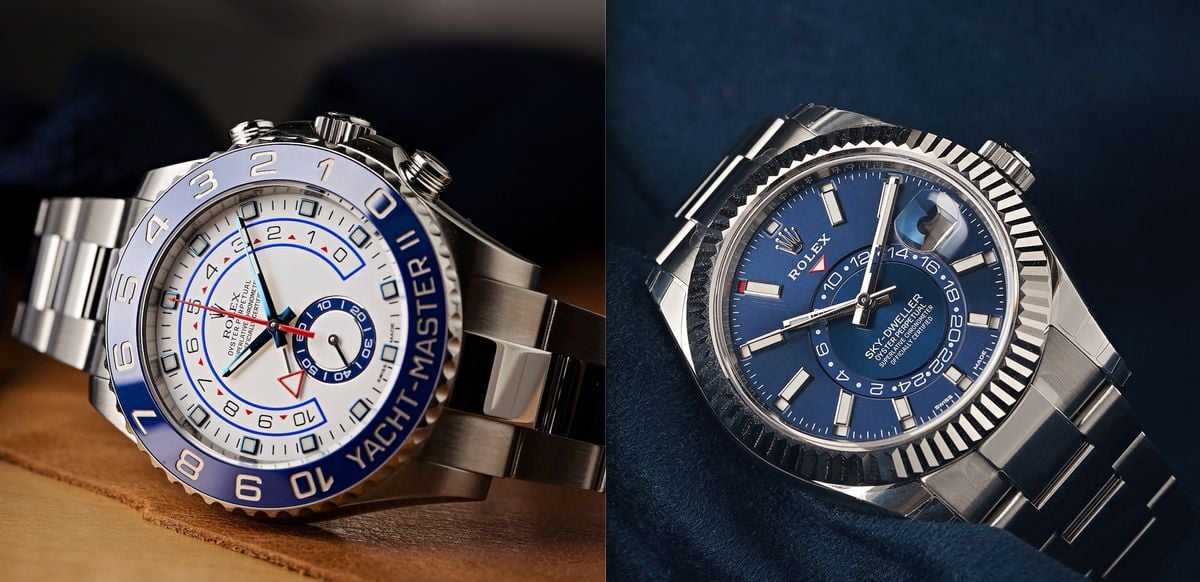
Rolex Complications
Rolex has built much of its unassailable reputation by producing watches that are stylish, elegant, robust, and most of all, mechanically simple. Aside from the Daytona’s chronograph complication, as far as Rolex’s main production models are concerned, a GMT function or the President’s double calendar is really as complicated as the brand has ever gotten.
Dig back far enough into the archives and you will find a moonphase model from the 1950s (now resurrected in the Cellini line) but apart from that, for the first century in business, Rolex has really been perfecting the art of the simple three-hand time teller, with perhaps a date display if you’re lucky.
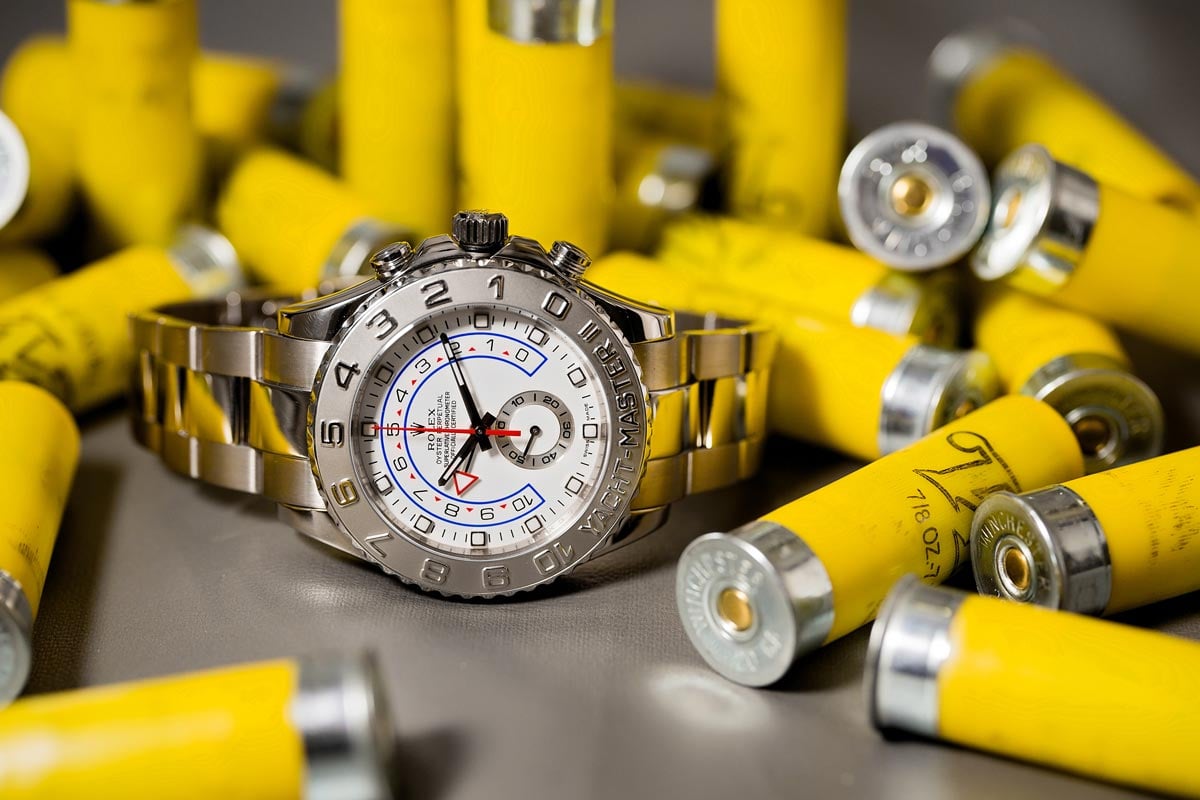
The Rolex Yacht-Master II
That all changed in 2007, when Rolex launched the sequel to the original Yacht-Master, and brought us the inventively titled Yacht-Master II. Identical to its sibling in no way whatsoever, the Yacht-Master II (sometimes referred to as the Yacht-Master 2 or YMII) was as radical a departure from the usually conservative Rolex playbook as you could get.
At 44mm, it was easily the largest watch in the collection, and was a big, bold attention-grabber marketed at a particularly niche section of the buying public. Shouting its name in huge letters across the bezel, and given a mishmash of elements on its dial, there was no chance of it going unnoticed. It was released in two variants initially, the ref. 116689 in white gold was the slightly more underplayed (and expensive) of the pair, while the ref. 116688 in yellow gold with a bright blue Cerachrom bezel was the real grandstander.
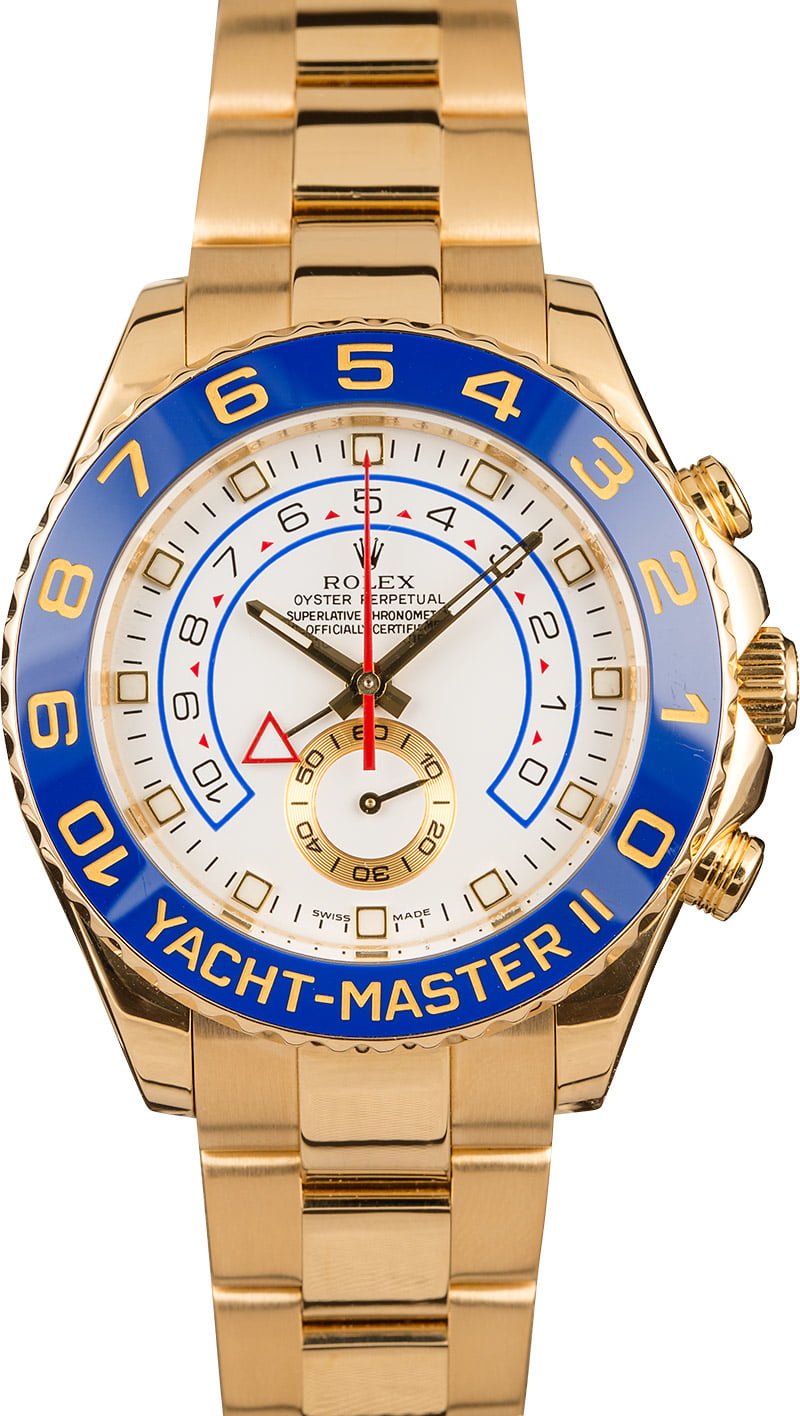
Inside both, the Cal. 4160 was a heavily reworked version of the Daytona’s Cal. 4130, and it powered the industry’s first programmable flyback or fly-forward regatta timer with a mechanical memory. What would you possibly ever need one of those for? Well, the clue is very much in the name, with the watch built explicitly for the world’s competitive yacht-racing crowd.
Rolex has been involved in the impossibly glamorous sport of professional sailing for decades, sponsoring some of the highest profile events around the globe, including the Rolex Fastnet and the Sydney to Hobart Yacht Race. It was to help captains of the ships in these races overcome the timing challenges of regatta competitions that the Yacht-Master II’s very specific complication was invented.
Each contest begins with a countdown to the starting gun, usually between five and 10 minutes long, during which the boats must tack back and forth behind the start line. The watch’s timer allows the wearer to set that duration on the dial as a normal method but, crucially, also gives the ability to resynchronize it with the official clock if it is accidentally started too early or late. In addition, instead of a typical flyback, the Yacht-Master II resets itself forward or backwards to the nearest minute rather than to zero.
The complex operations require not only two pushers either side of the winding crown, but also the first generation of Rolex’s Ring Command Bezel, which links the outer bezel of the watch directly to the internal movement. The bezel on the Yacht-Master II serves as a form of analogue on/off switch, locking and unlocking the various features, to facilitate the setting process for the countdown timer.
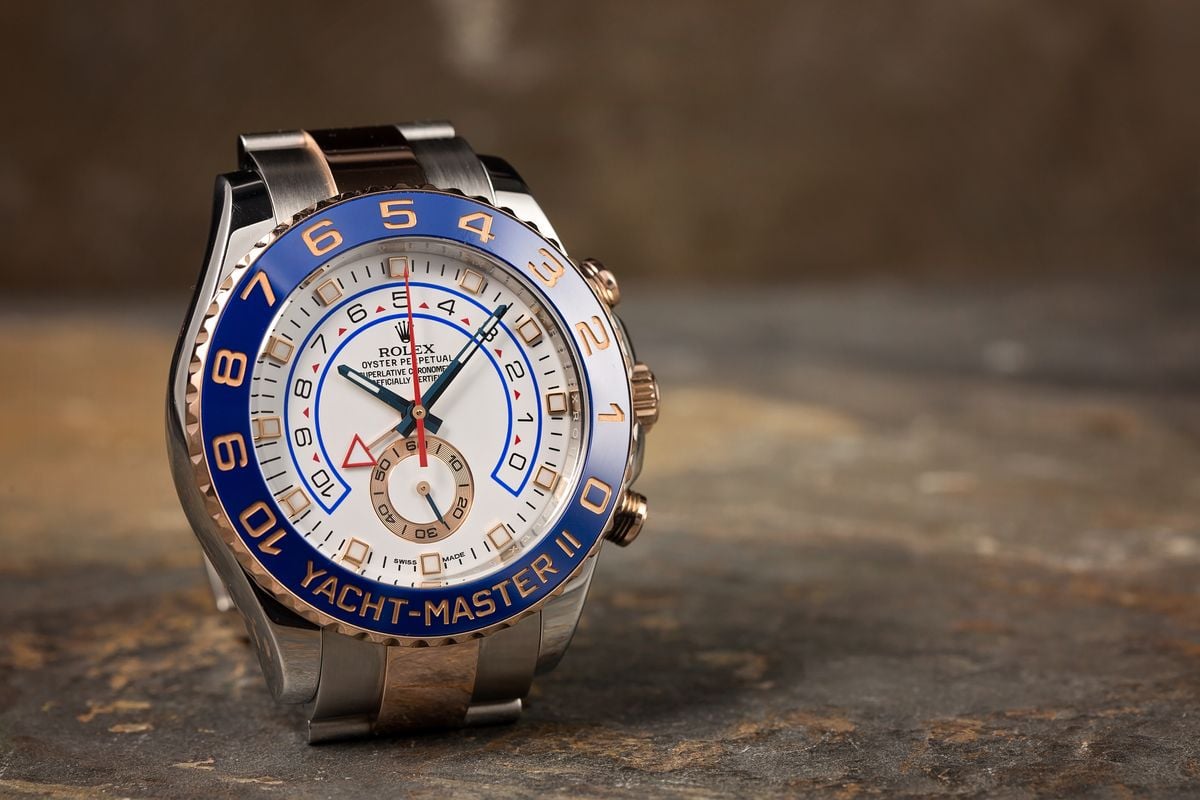
Since the original launch of the Yacht-Master II collection, the range has expanded to include a two-tone Everose Rolesor edition and an all stainless steel piece, both fitted with blue Cerachom bezels. In 2013, the Yacht-Master II got an update to its movement in the form of the Cal. 4161. An evolution of the Cal. 4160 that contains 360 components and took Rolex over 35,000 hours to devise.
Although no one was in any doubt that the watch was an impressive technical achievement, the aesthetics split opinions. There was none of the subtlety that traditionalists have long valued with Rolex, with the face made up of an unusual set of features – a small seconds sub dial at the bottom and a horseshoe-shaped counter around the top, numbered 1 to 10 for the regatta countdown, along with an arrow-tipped additional hand.
However, as with many offerings from the brand, the Yacht-Master II’s looks have found their footing over time, and the watch has become more and more accepted. Today, although not worn by that many skippers (in the same way Rolex’s dive watches rarely see the ocean) the Yacht-Master II has certainly found an appreciative audience beyond its intended boat-racing market.
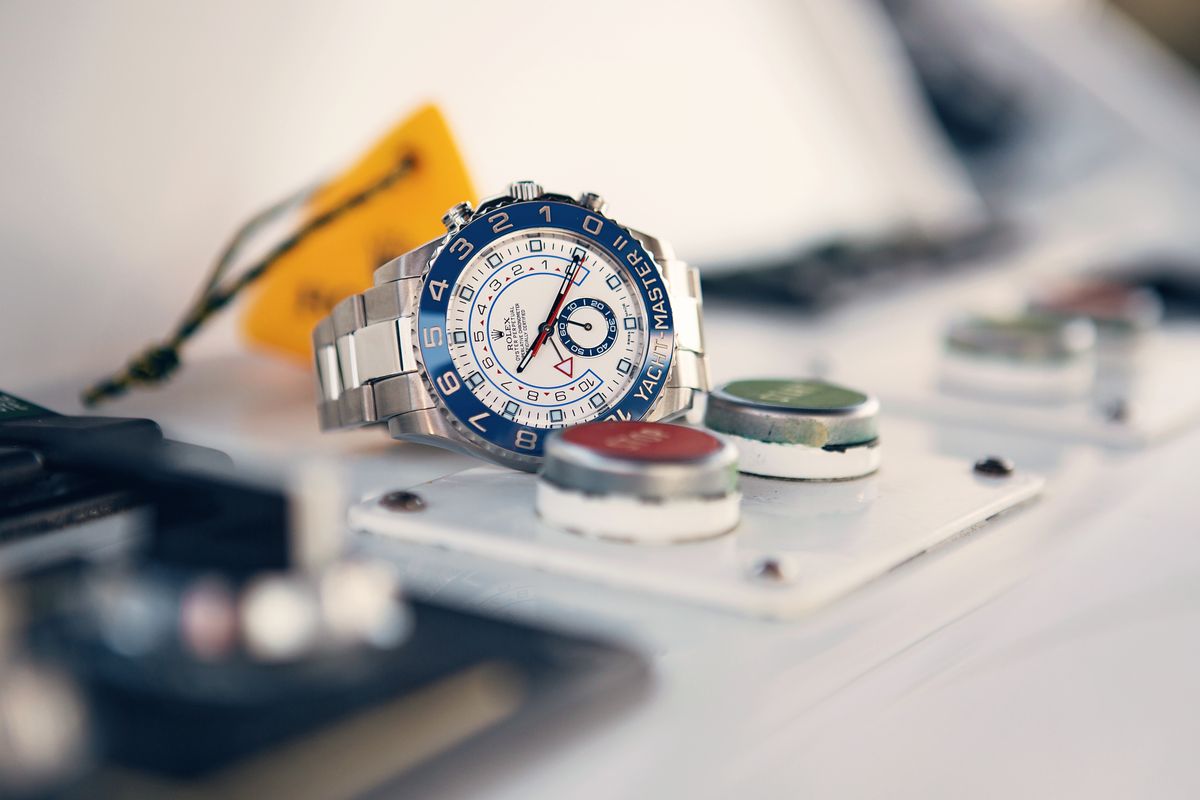
The Rolex Sky-Dweller
Even though you would never guess from its appearance, the Sky-Dweller is an even more complex beast than the Yacht-Master II. Its graceful silhouette and fluted bezel land it firmly in dress watch territory, and at first glance it could be mistaken for a Datejust or Day-Date. However, look closer and you see the dial has far more information to tell us than either of those classic pieces, and it actually does what no other Rolex watch ever has.
As well as a date function at the standard three o’clock position, the rotating off-centered disc is a new take on a dual time zone display, and expertly hidden is the brand’s first ever annual calendar. To cram all that in on a watch with no additional buttons to ruin the symmetry of the case is little short of amazing, and involves an updated version of Rolex’s Ring Command Bezel. This time, instead of just allowing the functions to be turned on and off like on the Yacht-Master II, the Sky-Dweller’s three-position bezel selects each individual operation as you rotate it, and all settings and adjustments are done with just the winding crown.
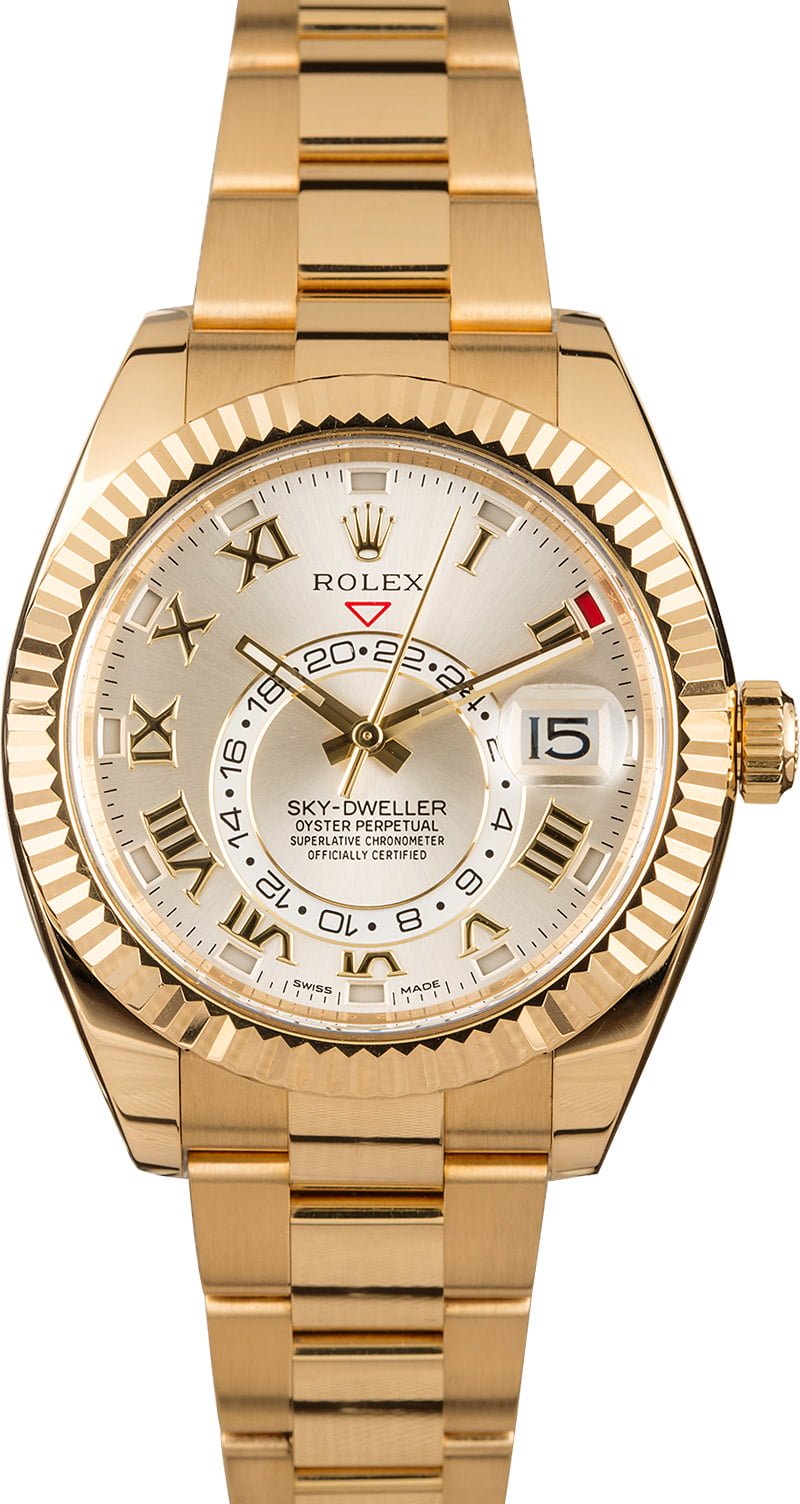
First released in 2012, the Sky-Dweller was originally only available in all precious metal; either yellow gold, Everose gold, or white gold. The hefty price tags attached to each, coupled with the somewhat unorthodox looks, meant that the watch failed to catch on at the beginning. Three more versions followed in 2014, with a changeup of dial color and bracelet options, but they were still pricey, solid-gold affairs.
It was only in 2017 that the first two-tone and stainless steel models arrived (albeit with an 18k white gold bezel), with a corresponding drop in price, bringing the Sky-Dweller within reach of a wider audience and starting it on its journey towards its current highly desirable status. All iterations are driven by another massively complex movement, in this case the Cal. 9001. Made up of 380 parts, it is the most component-heavy caliber Rolex has made and powers not only the standard functions and the GMT, but also the annual calendar, a system that the brand calls SAROS.
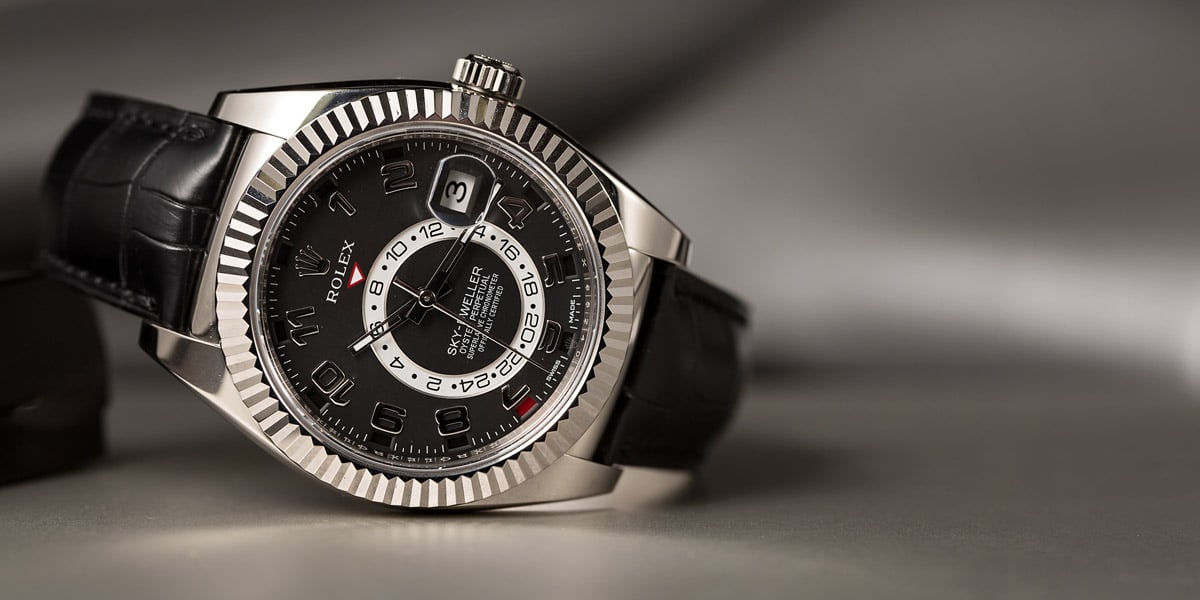
Like all annual calendars, the Sky-Dweller’s date only needs correcting once a year, at the end of February. At all other times, the mechanism compensates for the different number of days in the month. And the way it presents the month display for the complication is also unique: above each of the 12 hour markers is a small aperture, used to represent the month of the year. The current one is filled in in a solid color – so a blocked out window above the six o’clock signifies June, over the seven is for July, etc. It is a superbly economical way of doing things, and allows for a far more uncluttered display than would otherwise be possible.
The GMT function is likewise a novel experience. The small inner disc does away with the need for an extra hand as on the GMT-Master or Explorer II. Instead, it is simply marked with a 24-hour scale and rotates to show the correct time at the top, which is indicated by a small triangle. All told, the Sky-Dweller adds up to one of the most complete and impressive luxury traveler’s watches presently on offer.
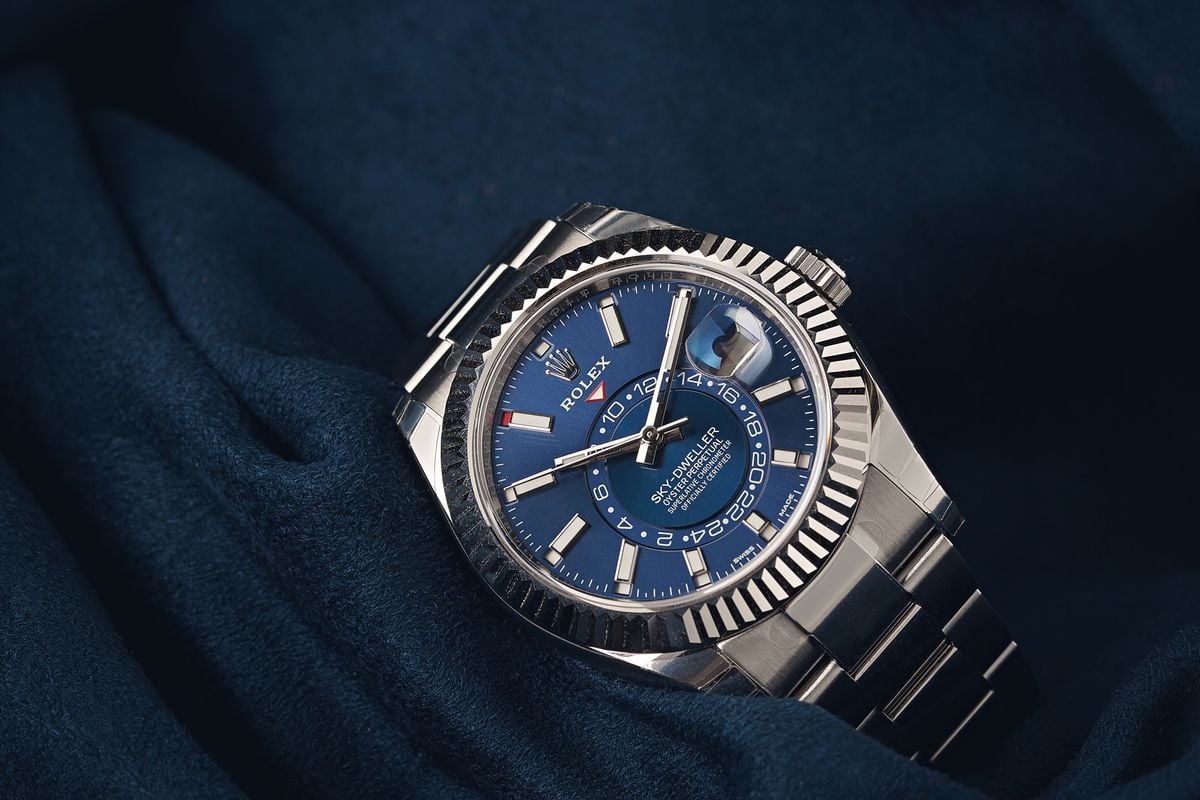
Yacht-Master II vs. Sky-Dweller
So we have two pretty extraordinary watches, each designed for a definite purpose, and containing technology unseen anywhere else in the brand’s collection. One is a born showman, the other quietly sophisticated, but both do their respective jobs extremely well.
Is there a case for calling one better than the other? Like all these things, is it completely subjective. Yes, the chances are that you will rarely (if ever) use the Yacht-Master II’s party piece for its intended purpose. However, the countdown timer can still be used for timing anything else (just as long it doesn’t take more than 10 minutes). Additionally, it is a quirky, imposing, supersized watch that is guaranteed to get you seen.
The Sky-Dweller, on the other hand, wins out in day-to-day usability, with the annual calendar one of the most valued complications a watch can have, and the GMT functionality perfect for jet-setters or frequent travelers. At 42mm, it is also slightly more compact than the Yacht-Master II, and can be worn with a wider selection of outfits. The model you choose will always come down to personal taste, but it is reassuring to know both come from just about the finest watchmaker on the planet, and have an engineering virtuosity that is second to none.
